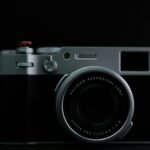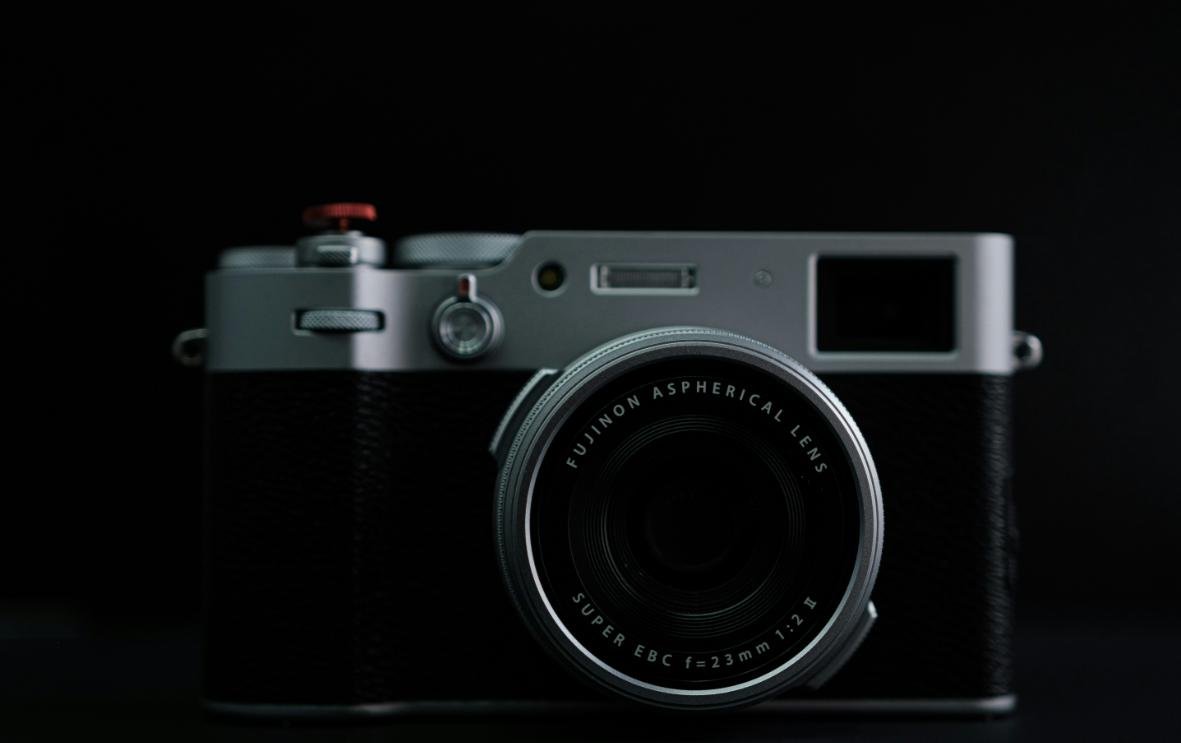Table of Contents
Introduction to Camera Types
Photography as an art form has evolved significantly since its inception, with various types of cameras playing pivotal roles in this development. Two prominent categories are rangefinders and single-lens reflex (SLR) cameras. Understanding these devices is crucial for both enthusiasts and professionals, as they offer different functionalities tailored to distinct photographic needs.
Rangefinder cameras, characterized by their compact design and precise focusing mechanism, emerged in the early 20th century. These cameras typically feature a separate viewfinder and a focusing system that allows photographers to gauge the distance to their subject accurately. This design enables a quiet and unobtrusive shooting experience, making them particularly popular among street photographers. Historically, rangefinders were utilized extensively in documentary photography and by photojournalists due to their reliability and portability.
In contrast, the single-lens reflex (SLR) camera incorporates a mirror mechanism that allows users to view exactly what the lens captures through an optical viewfinder. This design has made SLR cameras particularly popular for various photography genres, including portrait, landscape, and sports photography. SLRs became iconic in the latter half of the 20th century, with advancements in technology improving autofocus and exposure metering capabilities. The versatility and high image quality associated with SLR cameras have solidified their place in both professional and amateur photography, influencing how images are captured and shared.
Understanding the fundamental differences between these two camera types is essential for making informed decisions regarding equipment selection. Each camera boasts unique features, benefits, and drawbacks, influencing the photographic results and user experience. As the photography landscape continues to evolve, it is pivotal to grasp the historical context and functional significance of both rangefinders and SLR cameras.
What is a Rangefinder Camera?
A rangefinder camera is a type of photographic device that utilizes a unique focusing mechanism distinct from traditional single-lens reflex (SLR) cameras. Central to the design of rangefinder cameras is their compactness and sophisticated optical system, which comprises two separate optical paths. This allows users to align two images seen through the camera’s viewfinder, enabling precise focusing. In contrasting to SLR cameras, which directly reflect the image seen through the lens, a rangefinder camera separates the viewfinder from the lens system, enhancing portability and reducing size.
The mechanics of a rangefinder camera operate by employing a coupled rangefinder mechanism. When the user adjusts the focusing dial, the position of the viewfinder image shifts until it coincides with the subject’s position. This method allows for accurate distance measurement, particularly beneficial when capturing subjects that are not in direct view of the camera’s lens. The result is an image that is sharply focused, making the rangefinder principle particularly popular among street and documentary photographers who value precision and discretion.
Rangefinder cameras come with unique features that set them apart. They often have a quiet shutter operation and can be outfitted with a selection of prime lenses that provide high image quality. Furthermore, their slimmer profile makes them easier to handle and carry compared to bulkier SLR models. Notable examples of rangefinder cameras include the Leica M series, known for its exceptional build quality and optical performance, and the Canonet series, which appeals to both amateur and seasoned photographers alike. This distinctive blend of compact design and precise focus systems makes rangefinder cameras a favored choice in various photography styles.
What is an SLR Camera?
Single-Lens Reflex (SLR) cameras stand as a significant innovation in the world of photography, renowned for their intricate design and functional capabilities. At the core of an SLR camera is its mirror system, which plays a pivotal role in image capture. When the shutter button is pressed, the mirror flips up, allowing light to enter the camera and strike the image sensor or film. This reflex mechanism enables photographers to view through the same lens that will capture the image, providing a true representation of the scene being photographed.
One of the defining features of an SLR camera is its optical viewfinder. The viewfinder offers a direct optical window into the camera, facilitated by a combination of mirrors and prisms, ensuring that the user sees exactly what will be captured in a photograph. This component significantly enhances accuracy and composition, allowing photographers to frame their shots precisely. Additionally, the ability to interchange lenses gives SLR cameras a versatile edge, accommodating various focal lengths and aperture sizes, thus enabling tailored photographic experiences.
SLR cameras are broadly categorized into two main types: digital and film. While film SLR cameras capture images on photographic film, digital SLR (DSLR) cameras employ electronic sensors to record images. The transition from film to digital SLR cameras has revolutionized photography, offering features like instant image review and advanced editing capabilities. Despite the rise of mirrorless cameras, traditional SLRs still maintain a loyal following, as many photographers appreciate the optical viewfinder experience and the tactile feel of manipulating physical settings.
Overall, the structure and functionality of SLR cameras make them highly regarded within the photography community. Their enduring popularity can be attributed to the combination of advanced technology and user-friendly features, allowing both amateurs and professionals to achieve high-quality images across diverse photographic environments.
Comparative Advantages of Rangefinder Cameras
Rangefinder cameras provide distinct advantages that make them appealing, particularly to certain groups of photographers. One of the most noticeable benefits is their size and weight. Typically, rangefinders are more compact and lighter than SLR cameras, primarily due to the absence of a mirror mechanism and prism. This design not only aids in ease of transport but also allows for more discreet shooting, which is advantageous in situations such as street and candid photography.
Another key advantage of rangefinder cameras is their operational noise. Unlike SLR cameras, which often produce significant noise during the mirror flipping process, rangefinders operate more quietly. This characteristic enables photographers to capture spontaneous moments without drawing attention, making them particularly suited for candid photography. The silent operation can help capture the essence of a scene, allowing the photographer to remain unobtrusive.
Manual focusing is another significant aspect that sets rangefinders apart from SLRs. Many photography enthusiasts appreciate the precision and control provided by rangefinder cameras, especially when working in variable lighting conditions or when capturing fast-moving subjects. The rangefinder mechanism allows for quick adjustments and fosters a deeper connection between the photographer and their subject, as it often encourages a more deliberate approach to composition.
Furthermore, the viewfinder experience in rangefinder cameras provides an additional layer of engagement, allowing photographers to see beyond the frame. This wide field of view can be advantageous for anticipatory composition, enabling one to foresee the elements entering the scene. Overall, the combination of size, quiet operation, and manual focusing capabilities contributes to the unique appeal of rangefinder cameras, particularly among street photographers and those who thrive on capturing candid moments. As technology evolves, these advantages continue to hold relevance for discerning creators looking for the right tool for their craft.
Comparative Advantages of SLR Cameras
Single Lens Reflex (SLR) cameras have long been a standard choice for both amateur and professional photographers due to their distinctive features and capabilities. One of the primary advantages of SLR cameras is their sophisticated autofocus technology. Modern SLR systems are equipped with advanced autofocus systems that allow for fast and accurate focusing on subjects, even in complex lighting conditions. This feature is essential for capturing dynamic scenes or subjects in motion, ensuring sharp, clear images.
Another significant benefit offered by SLR cameras is the depth of field preview feature. This allows photographers to assess the depth of field before taking a shot, providing a visual representation of how much of the image will be in focus. This is particularly useful in scenarios such as portrait photography, where selective focus is often desired. The ability to control depth of field adds a layer of creativity and precision to the photographic process.
Additionally, SLR cameras offer the invaluable advantage of exposure previewing. Photographers can see the effects of different exposure settings in real-time, thereby gaining the opportunity to make adjustments as needed before capturing an image. This function allows for greater creative expression and helps ensure optimal exposure conditions for each shot. Furthermore, SLR systems also support a wide variety of high-quality lenses, ranging from macro to telephoto, which opens up countless creative possibilities and solutions for various photography styles.
The versatility afforded by these lenses empowers photographers to adapt to different shooting scenarios, such as landscape, portrait, or wildlife photography, significantly enhancing the overall photographic experience. With their advanced technological features and broad lens options, SLR cameras continue to be a popular choice in the ever-evolving world of photography.
Key Differences in Usage and Experience
When considering the choice between a rangefinder and an SLR camera, it’s important to understand how each type influences user experience and the scenarios in which they excel. Rangefinder cameras, characterized by their compact size and quiet operation, often appeal to street photographers and documentary creators. Their optical viewfinder provides a unique frame preview that allows users to see around the edges of the frame, enhancing their capacity to capture candid moments without causing disruption.
On the other hand, SLR cameras typically feature larger bodies, a mirror mechanism, and an optical viewfinder that reflects the actual scene through the lens. This design offers a more accurate representation of the framing and focus, making SLRs a preferred choice among portrait and landscape photographers seeking precision. The heavier and bulkier design of SLRs, however, may deter those who prioritize portability and stealth in their photography.
In terms of the learning curve, rangefinder cameras can be more approachable for beginners, particularly because they often feature fewer controls and simpler settings. This streamlined approach can encourage users to focus more on composition rather than technical details. Conversely, SLR cameras, albeit slightly more complex, provide extensive manual controls that enable advanced users to experiment with various settings such as exposure and depth of field. While this might seem daunting to newbies, it also offers a platform to learn and grow in photographic skill more deeply.
Both systems cater to different stylistic approaches in photography. Those preferring a documentary, candid style will find rangefinders to be crucial tools. In contrast, photographers aiming for high-quality images in dynamic situations often take advantage of the adaptability and versatility of SLR cameras. The choice ultimately hinges on individual preference, specific photography goals, and the desired user experience.
Considerations for Choosing Between Rangefinder and SLR
When deciding between a rangefinder and an SLR camera, several critical factors should be taken into account. First and foremost is your budget. Rangefinder cameras often come at a higher price point due to their specialized design and construction. High-end models from brands like Leica are renowned for their exceptional craftsmanship but can be quite expensive. Alternatively, SLR cameras, especially digital variants, provide a wider range of options at various price points, making them more accessible for beginner photographers.
Next, consider the intended use of the camera. Rangefinder cameras are particularly well-suited for street photography and documentary work, where their compact size and quiet operation allow for discreet shooting. The focusing mechanism in rangefinders enables precise focusing for well-composed shots in fast-paced environments. On the other hand, SLR cameras excel in versatility. With their ability to support various lenses and accessory attachments, they can accommodate everything from portraits to wildlife photography, making them a suitable choice for those who require a multi-functional camera system.
Personal preferences also play a substantial role in this decision. Photographers who enjoy the tactile feel and the slower, more deliberate process of shooting may lean towards a rangefinder. The absence of a mirror mechanism allows for a lighter, more streamlined camera body, which some find easier to handle. Conversely, those who prioritize a faster shooting speed and an optical viewfinder may find SLR cameras more advantageous. This is particularly true in scenarios that involve action or quick movements, where the immediate preview of the scene through the viewfinder can be immensely beneficial.
Ultimately, photographers should weigh these considerations according to their specific needs and shooting styles to make a well-informed decision that aligns with their creative vision.
Real-Life Applications and User Stories
The choice between a rangefinder and an SLR camera can profoundly influence a photographer’s approach and results. Numerous professionals and enthusiasts have shared their experiences, highlighting the distinct advantages and challenges posed by each system.
For instance, an experienced street photographer described their shift from an SLR to a rangefinder. They noted that the compactness and discreet nature of the rangefinder allowed them to capture candid moments without intruding on their subjects. This photographer emphasized that the lack of a mirror mechanism in a rangefinder made for quieter operation, which was particularly beneficial in bustling urban environments. Such a feature allowed for more spontaneous and unobtrusive photography, effectively bridging the gap between capturing art and respecting the scene’s integrity.
Conversely, an avid landscape photographer shared how the SLR’s robust functionality suited their needs perfectly. With its larger sensor and versatility in lens options, this photographer described using a high-resolution SLR to shoot expansive vistas, focusing on intricate details and dynamic range. The SLR’s optical viewfinder, which offered a true-to-life view of the scene, was particularly praised for allowing precise composition. This user felt that the adaptability of the SLR equipped them better for the varying conditions encountered while shooting in nature.
Another user, a wedding photographer, articulated the necessity of having both systems in their kit. They explained that the rangefinder was advantageous for its lightweight design during long wedding days, facilitating quick photos of fleeting moments. However, the SLR was indispensable for group shots, where focus accuracy and frame options were crucial. These stories illustrate that the decision between a rangefinder and an SLR often comes down to the specific needs and creative preferences of the individual photographer.
Conclusion and Final Thoughts
In concluding our exploration of the differences between rangefinder and SLR cameras, it is essential to reflect on the key distinctions and strengths that set these two types of cameras apart. Rangefinder cameras are celebrated for their compact design and quiet operation, allowing for discreet photography. Their optical viewfinder system provides a unique perspective, making them particularly appealing for street photographers and those who value portability. Conversely, SLR cameras, with their mirror and prism mechanism, present a more traditional approach to photography, offering a real-time optical view of the subject. This leads to greater accuracy in framing and focus, which is invaluable for those engaged in complex photography scenarios.
Both camera types possess their own merits, catering to different needs and preferences. The seamless manual controls and adaptability of rangefinder systems may attract enthusiasts who appreciate a hands-on approach to their craft. On the other hand, the versatility and lens options available with SLR cameras tend to foster interest among photographers who may seek to experiment with various styles and subjects.
Ultimately, the choice between a rangefinder and an SLR camera boils down to personal preference, specific photography goals, and style of shooting. As aspiring photographers continue to explore their passions, it is vital to consider not just technical specifications, but also how a chosen camera feels in hand and fits within one’s creative vision. With numerous advancements in camera technology and an ever-expanding array of lenses, now is an exciting time to delve into photography. Whether a photographer decides on the refined simplicity of a rangefinder or the familiarity and versatility of an SLR camera, the journey promises to be one of both discovery and artistry.






